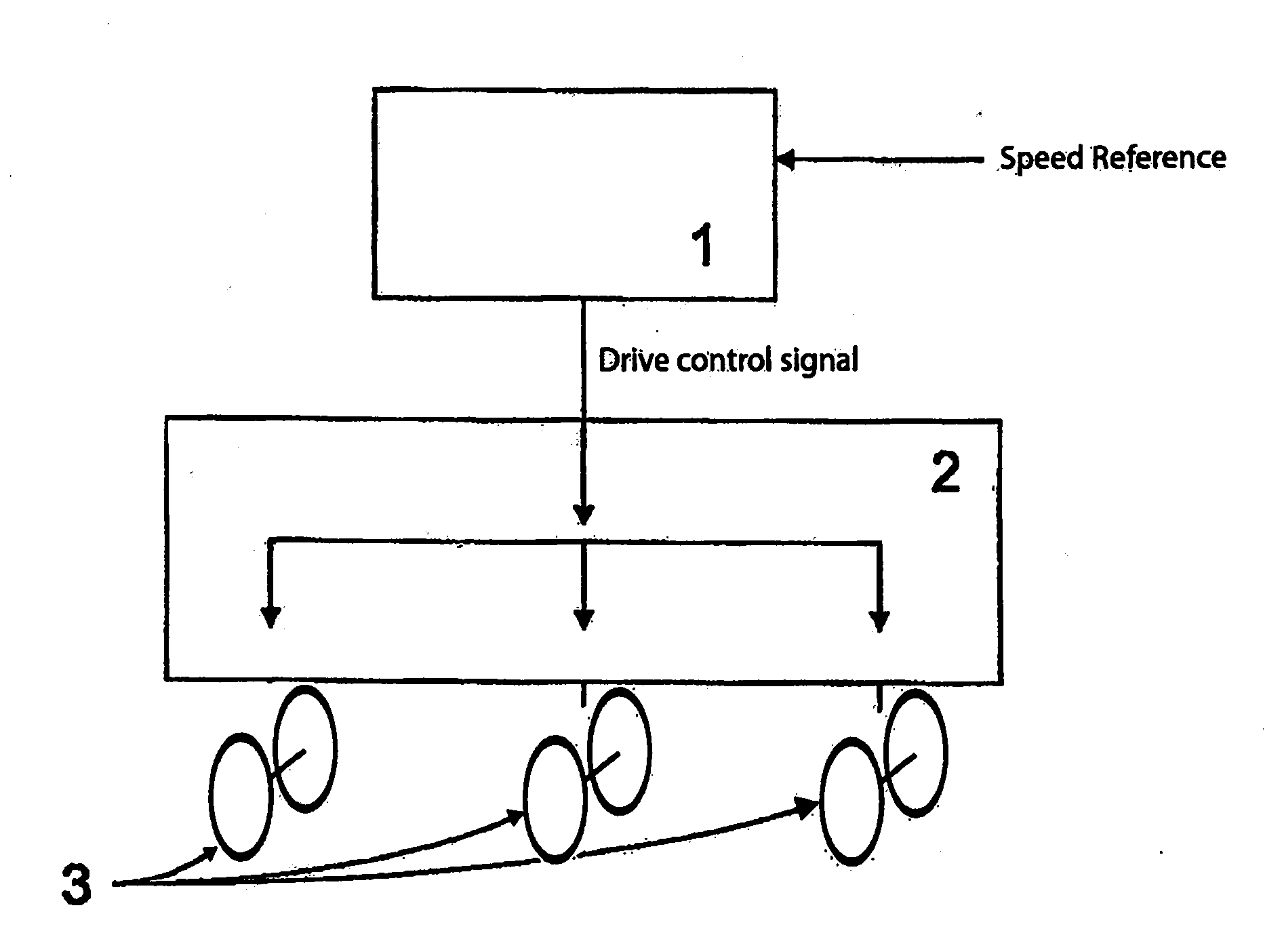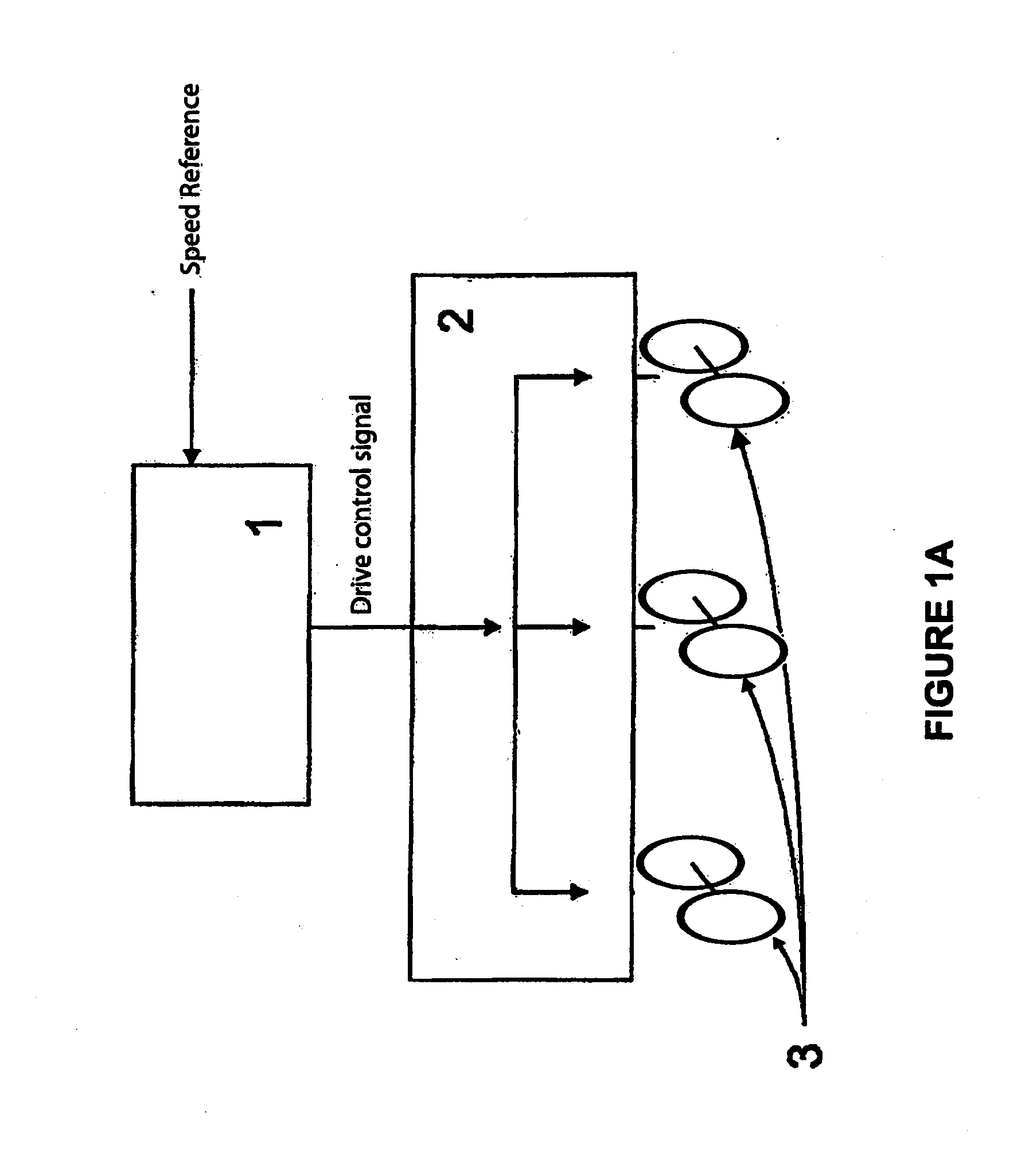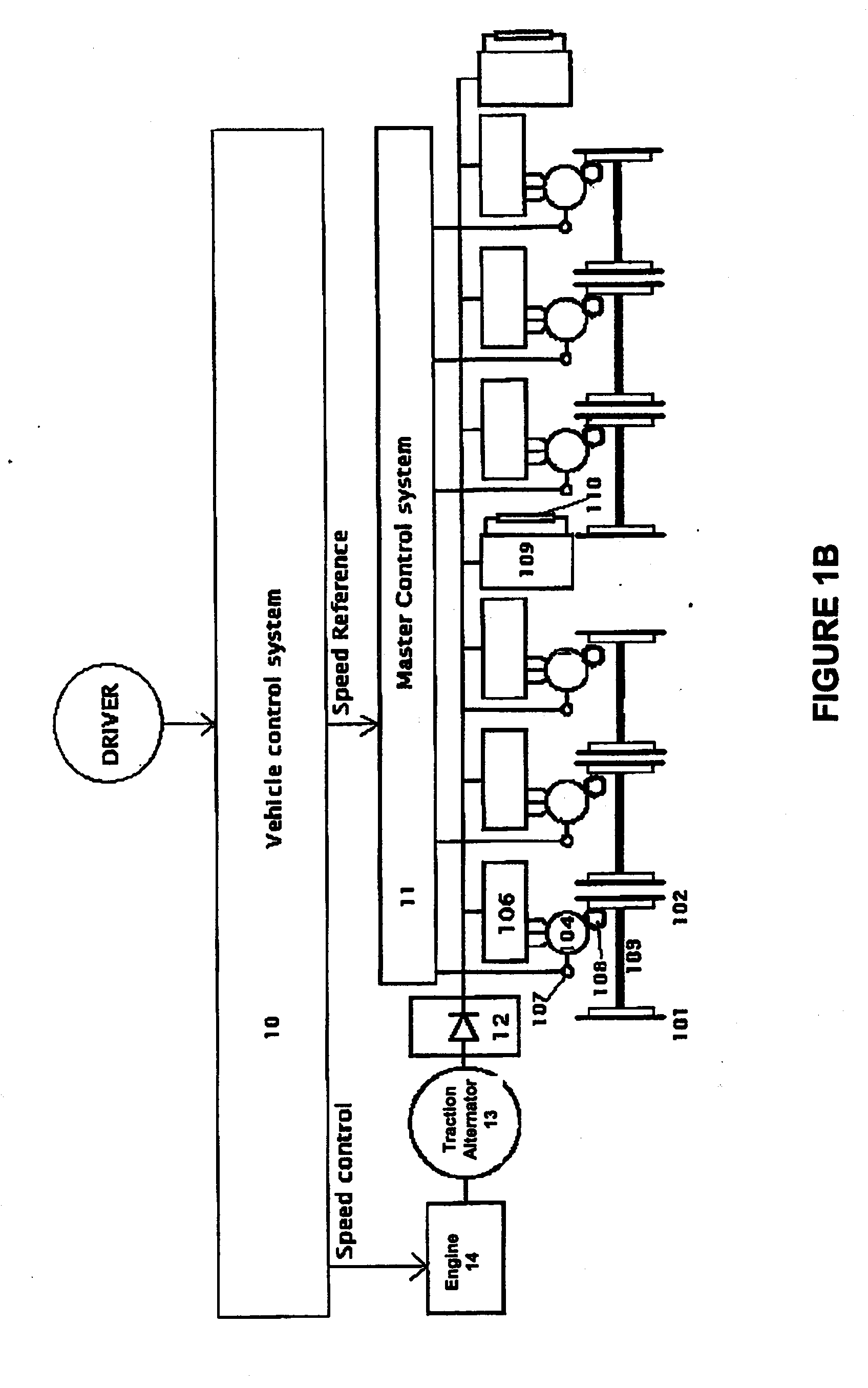Traction control system and method
a technology of traction control and control system, applied in the direction of braking system, position/direction control, locomotive, etc., can solve the problems of wheel slippage, difficult to find the right throttle setting to achieve optimum creep, and the problem of slipping and sliding occurs, etc., to achieve the effect of small diameter/circumferen
- Summary
- Abstract
- Description
- Claims
- Application Information
AI Technical Summary
Benefits of technology
Problems solved by technology
Method used
Image
Examples
Embodiment Construction
[0075]The present invention relates to traction control systems and methods which advantageously compensate for different traction and braking forces experienced by individual wheels of a vehicle having varying sizes. In an embodiment, this is achieved by measuring the individual wheel diameters relative to a reference wheel diameter and taking those measurements into account when controlling power to each individual wheel, so as to avoid wheel slip and slide.
[0076]Embodiments of the present invention will hereafter be described in the context of a traction control system and method for an AC locomotive. However, it will be understood by persons skilled in the art that embodiments are equally applicable to any wheeled vehicle and should not be seen as limited to the particular embodiment described herein. For example, the present invention could equally be used for controlling traction on a grader, or any other vehicle where varying wheel diameter may cause slip and slide to occur.
[...
PUM
 Login to View More
Login to View More Abstract
Description
Claims
Application Information
 Login to View More
Login to View More - R&D
- Intellectual Property
- Life Sciences
- Materials
- Tech Scout
- Unparalleled Data Quality
- Higher Quality Content
- 60% Fewer Hallucinations
Browse by: Latest US Patents, China's latest patents, Technical Efficacy Thesaurus, Application Domain, Technology Topic, Popular Technical Reports.
© 2025 PatSnap. All rights reserved.Legal|Privacy policy|Modern Slavery Act Transparency Statement|Sitemap|About US| Contact US: help@patsnap.com



